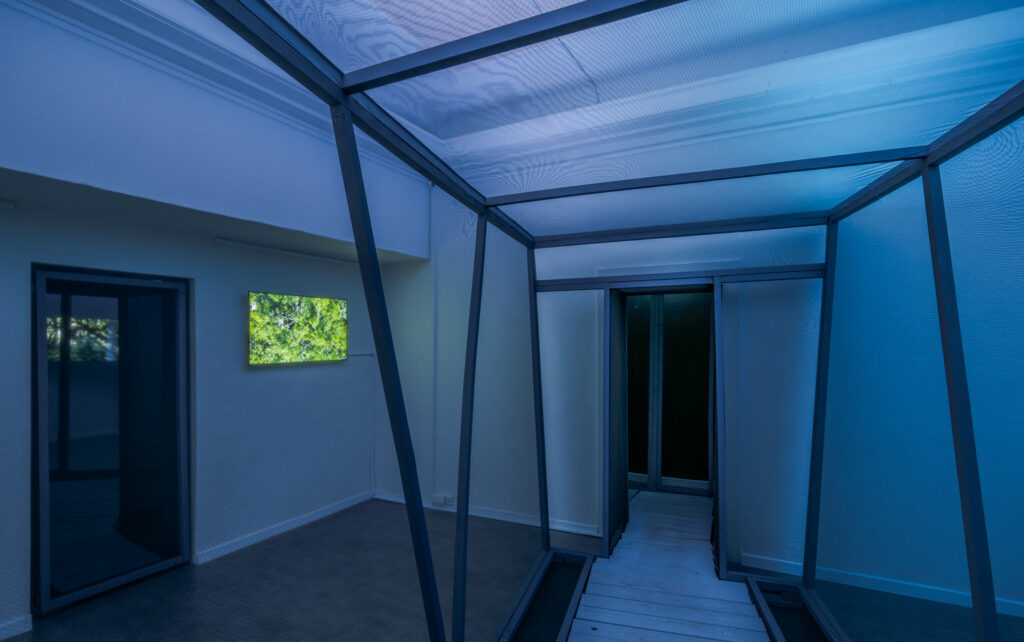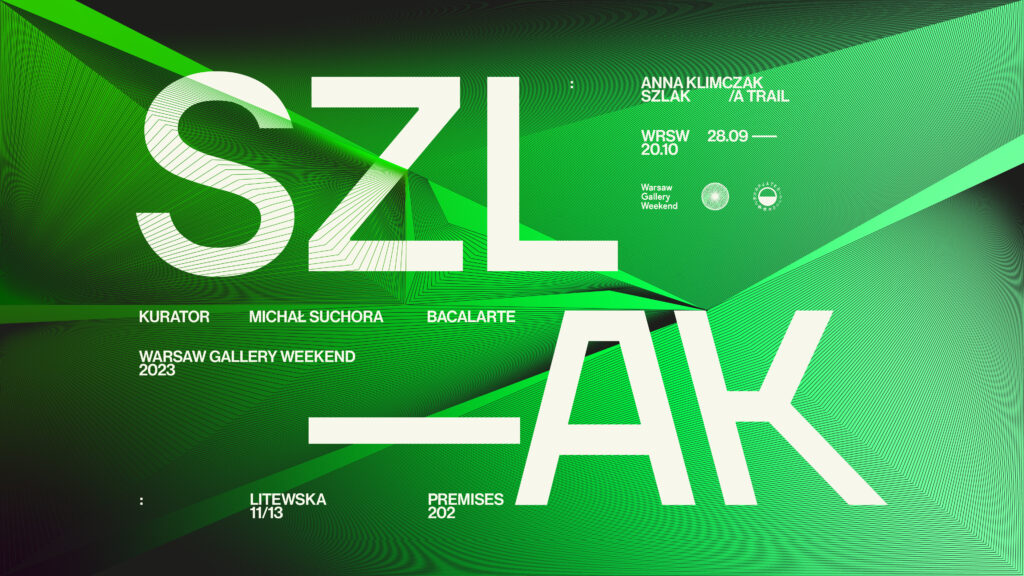Anna Klimczak „Szlak” / ‘A Trail’
curator: Michał Suchora
WARSAW GALLERY WEEKEND 2023
The exhibition in the BACALARTE Gallery runs until 20 October 2023
journal articles: ARCHISEARCH, VOGUE, LABEL MAGAZINE, GoOut
EN version of the text – scroll down
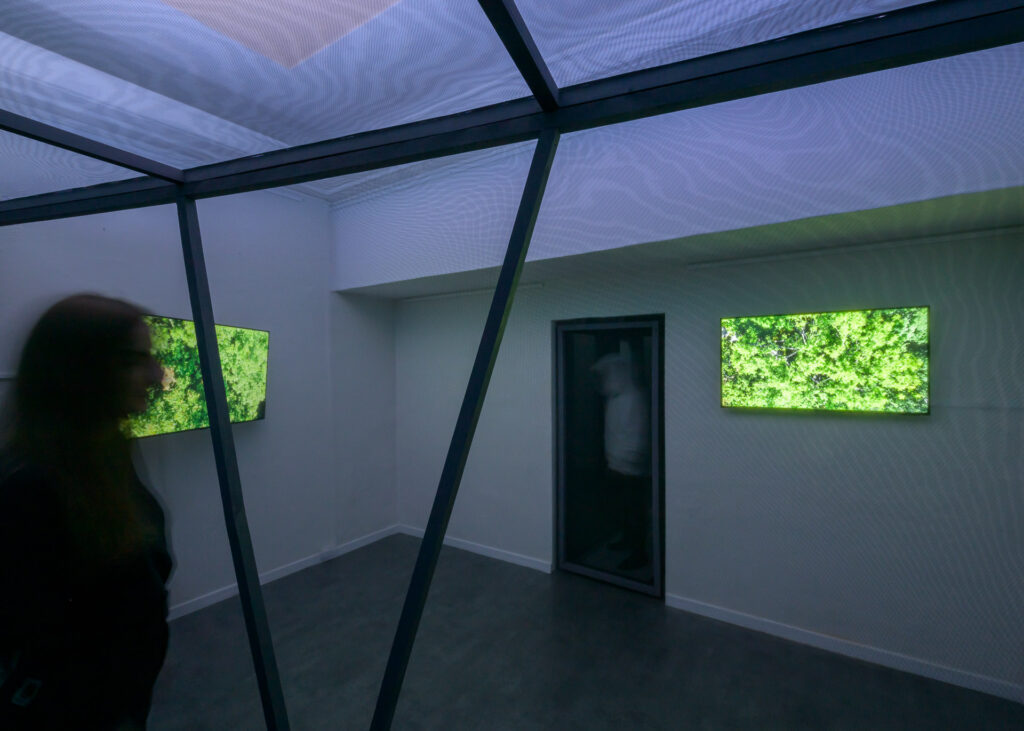
Formalnie nic się nie zmieniło. “Woliera” to tak jak w poprzednich odsłonach projektu (Galeria XXI, Warszawa 2012, Pawilon Czterech Kopuł, Wrocław 2023) drewniana konstrukcja obleczona czarnym, przepuszczającym tiulem i towarzyszące jej projekcje.

Jednak tym razem Anna Klimczak dokonała radykalnego zwrotu, obsadzając publiczność w roli nie obserwujących, a obserwowanych.

Bo “Woliera” to nie obiekt do kontemplacji z zewnątrz, ale przestrzeń, która otacza widza z każdej strony. Ściany i sufit pokrywa czarny materiał, podłoga jest drewnianym traktem – uniesionym nad posadzką galerii pomostem. “Woliera” przypomina wnętrze łodzi podwodnej albo kosmicznej kapsuły. Podzielona jest na kilka, połączonych ze sobą wąskimi korytarzami komór. Nie ma jak się odwrócić. Nie można zawrócić. Kierunek jest jeden: przed siebie, w stronę słabo migoczącego światła.
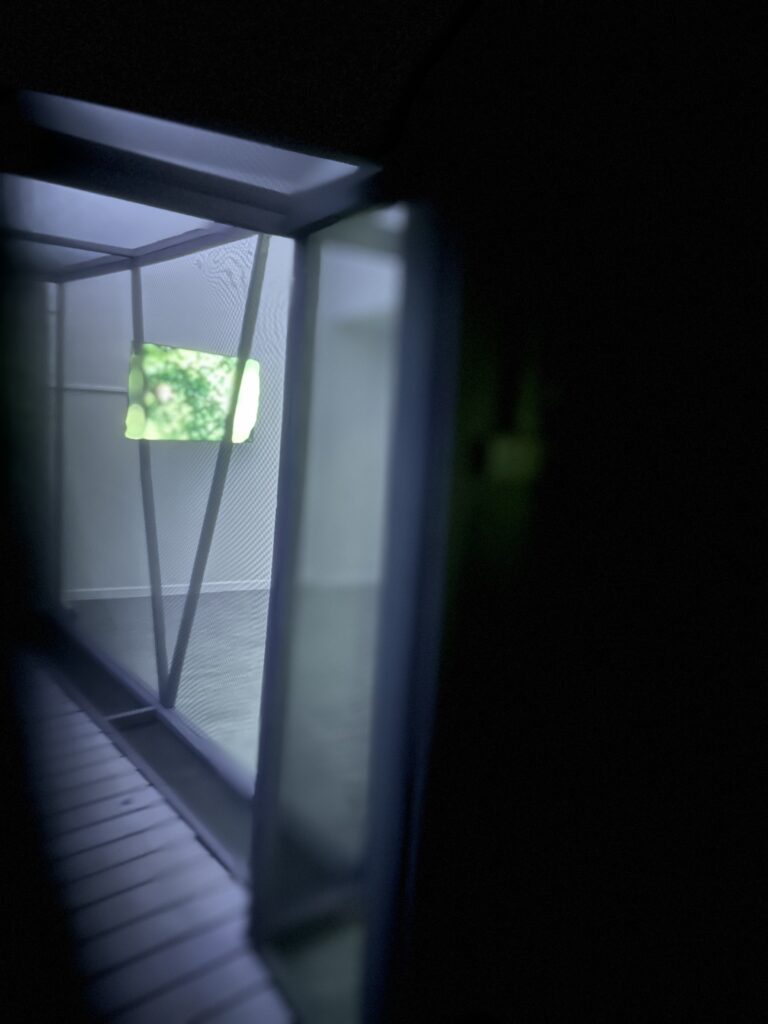
Na zewnątrz jest świat. Świat zapisany w formie cyfrowych wspomnień z lasu. Kadry są szerokie, obejmujące wierzchołki gęsto rosnących drzew lub bardzo wąskie, mieszczące tylko pojedynczą gałąź, która gdyby nie fakt, że jest tylko cyfrowym obrazem, mogłaby musnąć policzek przechodzącej blisko ekranu osoby. Ten las nie pachnie, nie szumi, nie daje cienia. W zestawieniu z czernią przypominającego żałobną woalkę tiulu zieleń liści jest tak soczysta, że widz zaczyna chcieć wydostać się już z tej kapsuły, wrócić do normalnego świata, gdzie świeci słońce i pada deszcz. Ale za kolejnym zakrętem jest tylko następny ekran.
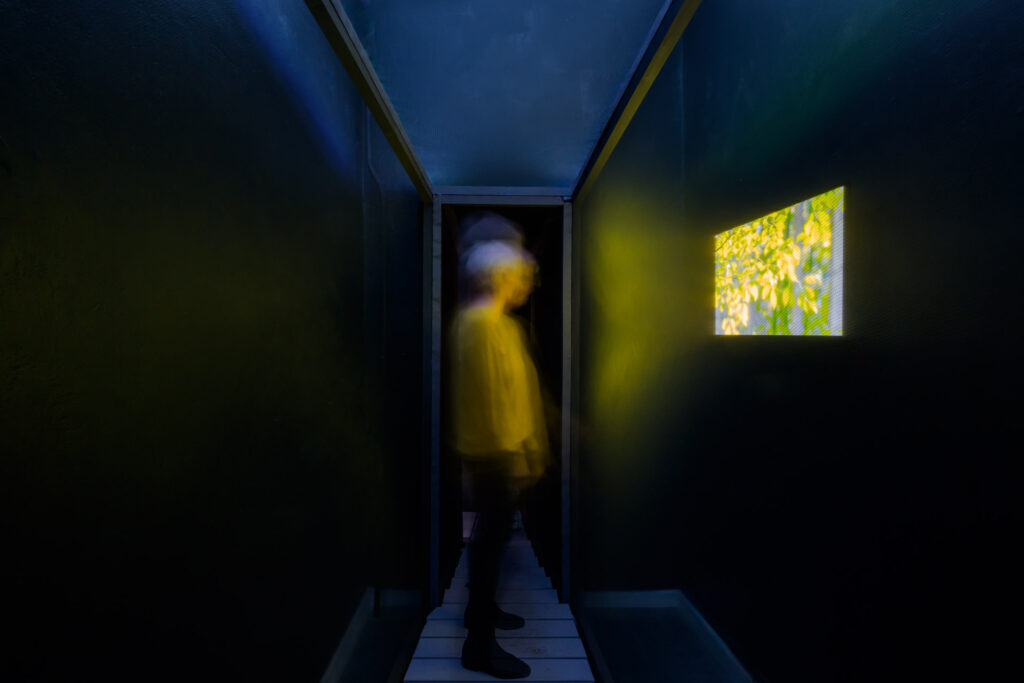
Półprzezroczysty tiul przepuszcza tylko trochę światła, raster tkaniny zaciera szczegóły projekcji i przestrzeni na zewnątrz woliery. Trudno się zorientować, co dzieje się tuż za cienką ścianą kapsuły. Czy ktoś tam jest? Obserwuje nas? Kim jest, przecinająca co jakiś czas kadr filmu, ubrana na czerwono postać? Poczucie wyobcowania wzmaga się z każdym krokiem. Uff, koniec, wypadam na dość obskurne, śródmiejskie podwórko. Nawet za takim widokiem można zatęsknić, spędziwszy zbyt dużo czasu w “Wolierze

Bo “Woliera” to nie tylko gra formalna, produkt “poznańskiej szkoły instalacji”. To efekt prześladującego autorkę przeświadczenia o tym, jak wyglądać może życie na ziemi w najbliższej przyszłości. Towarzyszący młodemu pokoleniu (Anna Klimczak jest matką dwojga dwudziestolatków i wykładowczynią akademicką) lęk klimatyczny udziela się nam wszystkim.
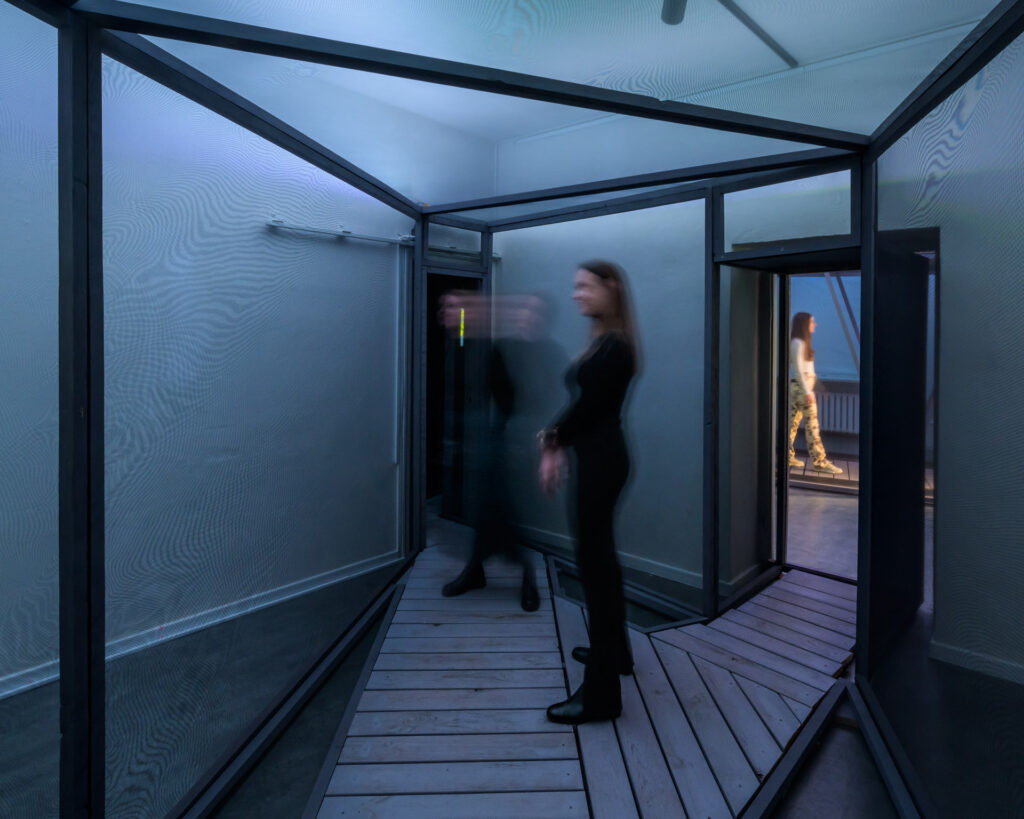
Ewolucja “Woliery” pokazuje poniekąd zmianę, jaka może już niedługo zajść w życiu społeczeństw. Tworzone przez człowieka ostoje, rezerwaty, wybiegi i woliery właśnie, budowane, by trzymać w nich, chronić i podziwiać zwierzęta i rośliny, mogą stać się (jeśli katastroficzne scenariusze się wypełnią) drogą do przetrwania naszego gatunku.
A przyroda, do której jeszcze wciąż mamy nieograniczony niemal dostęp? “Las” – wciśnij 1, “Morska plaża” – wciśnij 2, “Lodowiec” – wciśnij 3.
Michał Suchora, tekst kuratorski
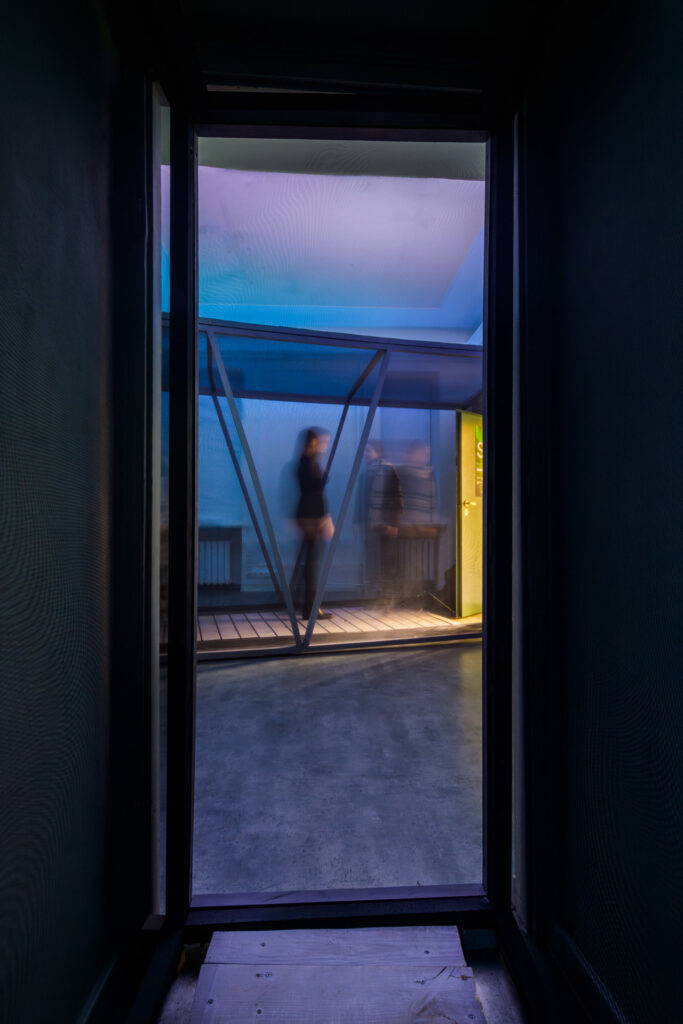
EN
Formally, nothing has changed. As in previous iterations of the project (Gallery XXI in Warsaw, 2012, Four Domes Pavilion in Wrocław, 2023), the “Aviary” is a wooden structure clad in black, translucent tulle and accompanied by projections. This time, however, Anna Klimczak has made a radical about-turn, casting the audience in the role not of the observers, but of the observed.

For the “Aviary” is not an object to be contemplated from the outside, but a space that surrounds the viewer on all sides. The walls and ceiling are covered with black fabric, the floor is a wooden walkway, raised above the gallery floor, like decking. The “Aviary” resembles the interior of a submarine or a space capsule, divided into several chambers that are interconnected by narrow corridors. There is no way to turn around. It is impossible to turn back. There is only one way: forward, toward a faintly flickering light.
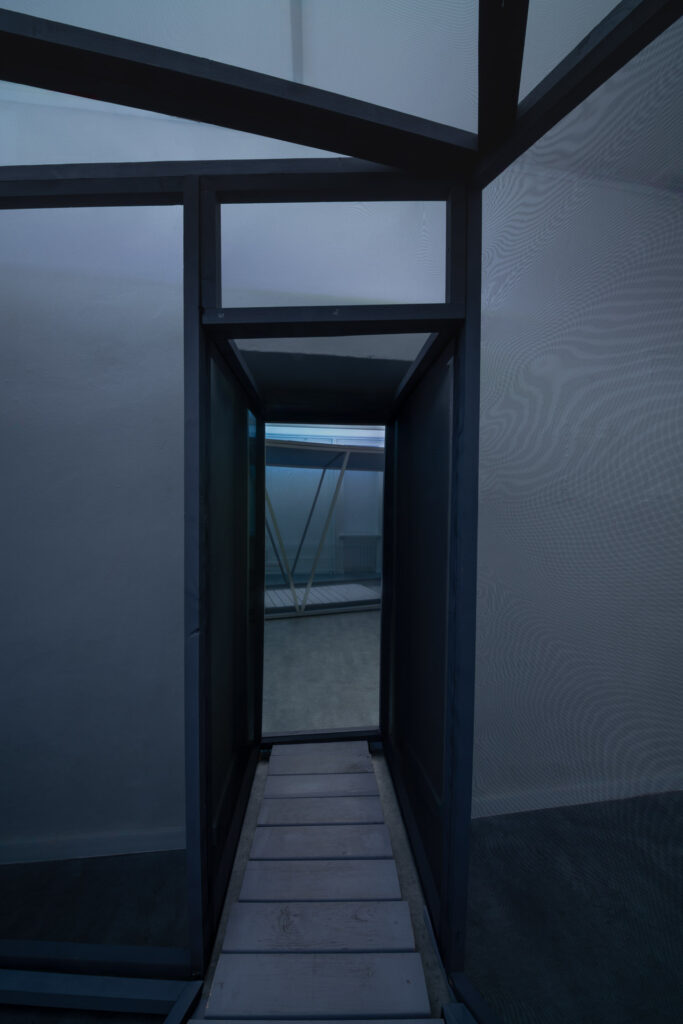
Outside is the world. A world recorded in the form of digital memories of a forest. The frames are wide, encompassing the tops of densely packed trees, or very narrow, containing only a single branch, which, if it weren’t for the fact that it’s just a digital image, could brush the cheek of a passerby close to the screen. This forest has no scent, no rustling, and no shade. Juxtaposed with the blackness of the mourning veil-like tulle, the green of the leaves is so lush that the viewer starts wanting to get out of the capsule right now, to get back to the normal world, where the sun shines and it rains. But around the next bend is just another screen.
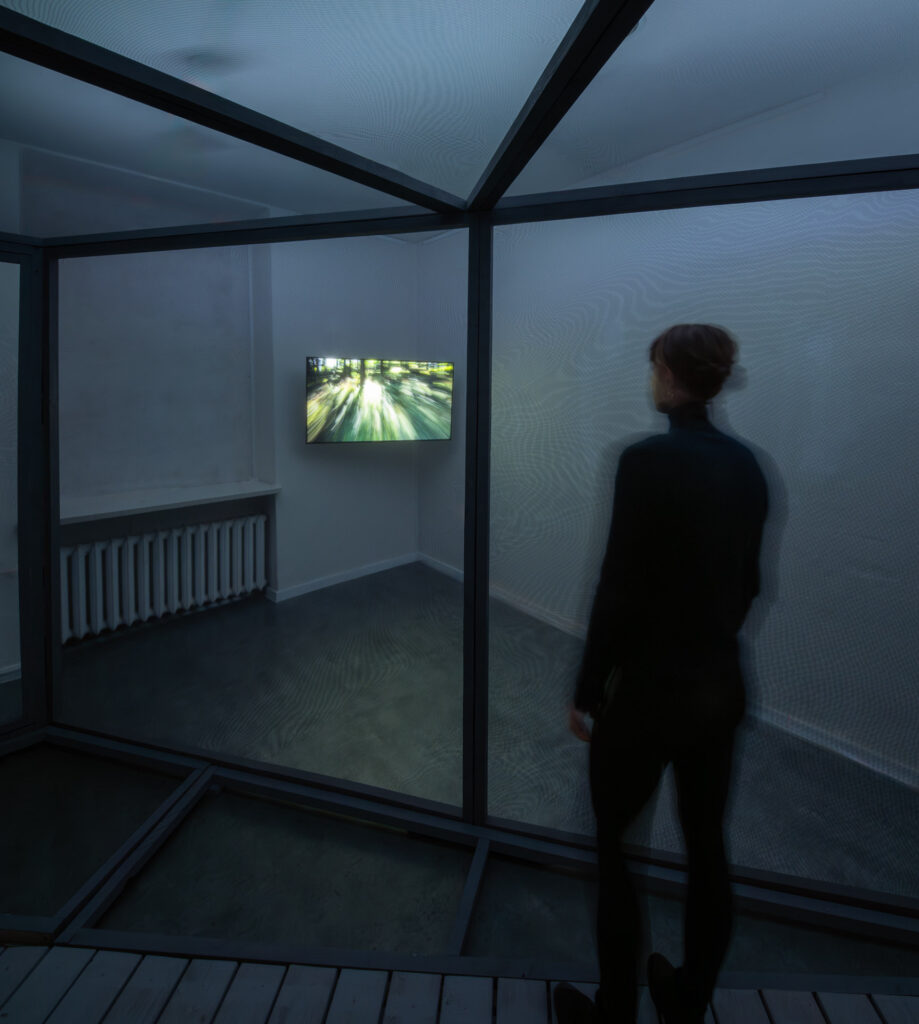
The semi-opaque tulle only lets a little light through, while the fabric’s raster blurs the details of the projection and the space outside the aviary. It’s hard to make out what’s going on just beyond the capsule’s thin wall. Is someone there? Are they watching us? Who is the figure dressed in red, periodically crossing the shot in the film? The sense of alienation intensifies with every step. Phew, it’s over. You tumble out into a rather dingy inner-city courtyard. You might even be missing this kind of view after spending too much time in the “Aviary”.

Because the “Aviary” isn’t just a formal game, a product of the “Poznan school of installation”. It is the product of the artist’s haunting premonition of what life on Earth might look like in the near future. The climate anxiety that accompanies the younger generation (Anna Klimczak is both a mother of two twenty-somethings and a university lecturer) is shared by all of us.
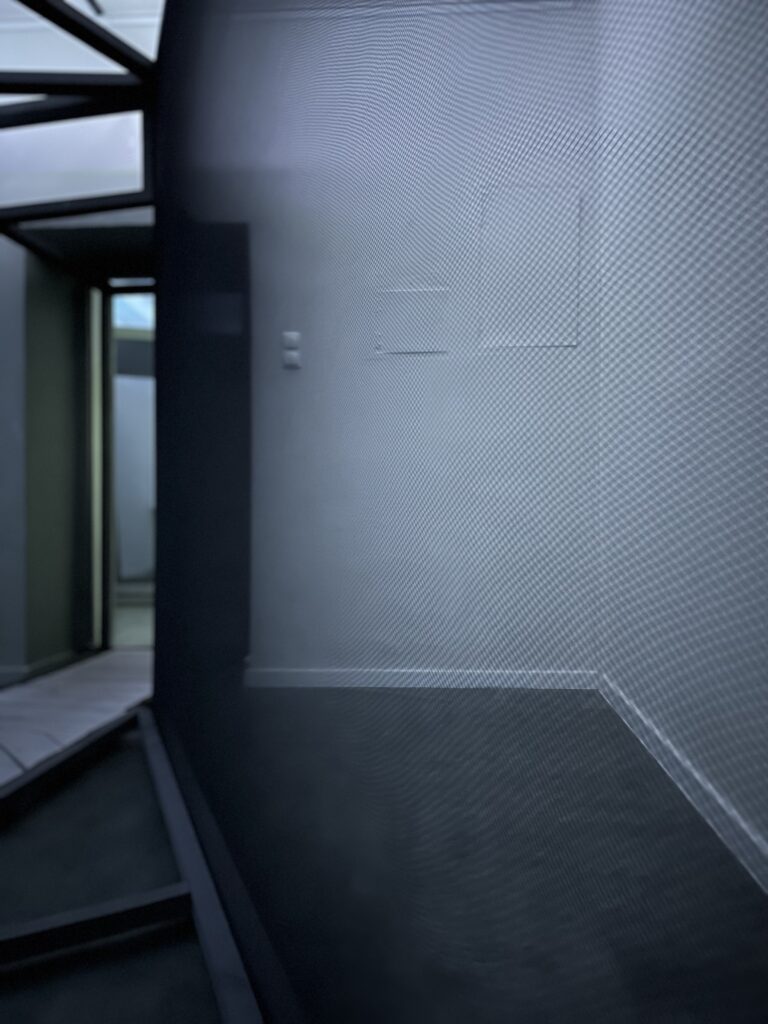
Thus, in a way, the evolution of the “Aviary” illustrates the transformation that may soon take place within societies. Man-made wildlife sanctuaries, reserves, enclosures and aviaries specifically built to house, protect and admire animals and plants, may become, should the doomsday scenarios come to pass, a means of survival for our species.
What of nature, to which we still have almost unlimited access? “Forest” – press 1. “Seaside Beach” – press 2. “Glacier” – press 3.
Michał Suchora, curatorial text
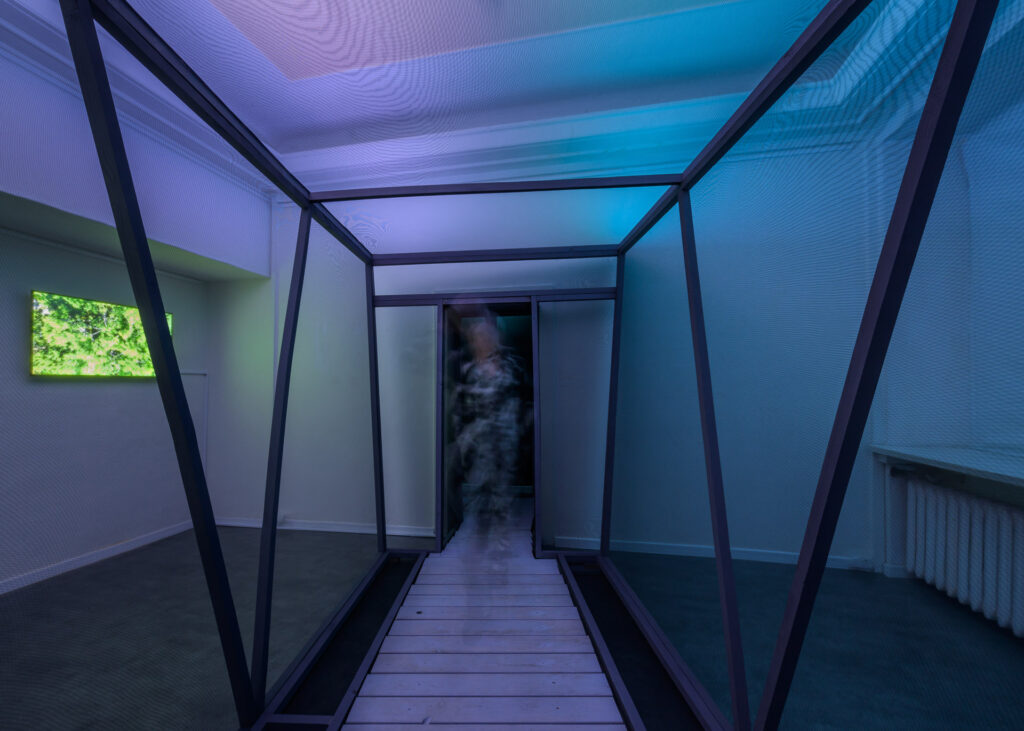
opis wystawy / exhibition description
Instalacja jest spacerem po galerii. Przypomina ścieżkę w rezerwacie przyrody lub miejscu o ścisłych zasadach poruszania się. Wewnętrzny korytarz został zbudowany przy użyciu czarnej, przezroczystej tkaniny rozciągniętej na modułowych ramach. Tworzy to strukturę tunelu zwężającego się w niektórych obszarach a poszerzającego w innych, oferując punkty obserwacyjne. Przechodząc przez instalację widzowie mogą obserwować się nawzajem. Projekt jest inspirowany serią prac Anny Klimczak pod nazwą „Woliera”. Oryginalny pomysł klatki dla ptaków został przekształcony w środek komunikacji izolujący ludzi od architektury galerii i zaburzający jej proporcje. W przestrzeni znajdują się monitory stanowiące punkty świetlne, które umożliwiają zwiedzanie.
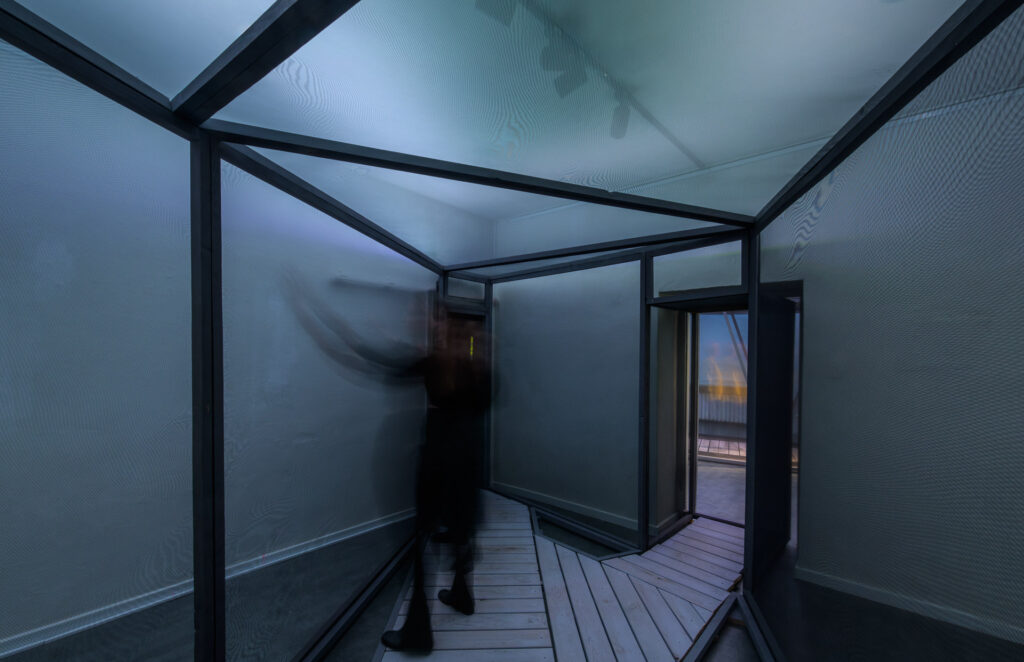
The installation is a stroll through the gallery. It calls to mind a trail in a nature reserve or a place with strict rules of movement. The inner corridor has been constructed using black transparent fabric stretched over modular frames. This creates a tunnel structure that narrows in some areas and widens in others, providing vantage points. As viewers walk through the installation, they can observe each other.The concept is inspired by Anna Klimczak’s series of works entitled 'Aviary’. The original idea of a birdcage has been transformed into a means of communication that isolates people from the gallery’s architecture and disrupts its proportions. The space contains monitors that serve as lighting points and allow visitors to explore.

photos by: Jędrzej Sokołowski; graphic design: Damian Ziółkowski
